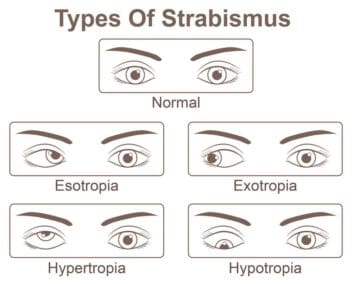The Cost of Strabismus Surgery or Correction
Strabismus surgery cost may range between $5,000 and $10,000 without insurance.
The good news is that insurance will generally cover the surgery, therefore greatly offsetting the out-of-pocket cost.
Table of Contents
Factors That Influence Strabismus Surgery cost Cost

The cost of strabismus surgery depends on several factors, including the level of severity and whether or not your insurance will cover all or part of the procedure. Other factors that influence strabismus surgery cost include:
- Hospital location.
- Whether your surgeon is in or out of your insurance network.
- Presurgical care and possible aftercare.
- Anesthesia or sedation.
- Nurses or additional surgeons (rare in strabismus surgery).
- Surgeon fees.
Strabismus surgery is usually not deemed cosmetic surgery, as it is generally considered medically necessary.
If you don’t have health insurance, this will greatly increase your out-of-pocket costs. In some cases, facilities are willing to reduce fees for those who don’t have insurance.
On average, strabismus surgery costs between $5,000 and $10,000. Severe or complex cases, such as when corrections need to be made from a prior surgery, may garner higher costs.
What Is Strabismus?
Often referred to as crossed eyes, strabismus prevents the eyes from aligning correctly. The condition is characterized by having eyes that appear to look at things in different directions.
Six eye muscles help each eye move up, down, side to side, and at angles. In some people, not all muscles work together, which may cause strabismus.
In addition to changing the way eyes should be aligned, this may cause changes in the way the brain receives visual information. This can affect depth perception and the ability to use binocular vision. It may also lead to vision loss.
Many people are born with strabismus, however strabismus may also develop after birth. Strabismus that appear later may be due to (but not limited to):
- Undiagnosed as children.
- Had head injuries or other accidents or eye damage.
- Had ailments, such as diabetes, stroke, brain tumors, Graves’ disease, or Myasthenia gravis.
How Surgery Corrects Strabismus
Surgery is the most common treatment for strabismus, and more than one procedure may be required depending on the severity of the case. Per the American Association for Pediatric Ophthalmology and Strabismus, procedures typically follow these steps:
- The surgeon identifies the affected muscles that result in poor eye alignment.
- They then remove extra muscle and suture the remaining muscle.
- The muscle is then folded (plication) or removed altogether.
- The muscle is then attached to the eye once more.
Once this part of the surgery is finished, the surgeon must decide which type of suture will work best to ensure that the eyes are in the best possible position for as long as possible. There are two options they may choose depending on the type of strabismus surgery.

- Standard strabismus surgery: A permanent knot will be made at the end of the surgery.
- Adjustable suture technique: This allows the surgeon to create a temporary knot that can be readjusted, usually within a few minutes or days after the surgery, depending on the length of adjustment time necessary for the patient. Until adjustments are performed, the patient will wear a patch over their eye.
Cost may vary somewhat according to the type of surgical technique used.
Surgery will include anesthesia or sedation, which will also affect the overall cost. Children who receive strabismus surgery are usually completely sedated, while adults generally receive localized anesthesia.
Once surgery is finished, a steroid and/or antibiotic eye drop will be applied to the eye. Some patients may receive an eye drop prescription as well. There will be fees for these prescriptions. If you have insurance, you will generally only pay your prescription copay amount.
Are There Alternative Treatments?
Not everyone with strabismus will need surgery. If your case of strabismus qualifies for nonsurgical treatment, you will save a good amount of money on treatment.
Treatments for milder cases of strabismus can include:
Eye exercises.
These exercises help both eyes focus on the same point and improve their coordination.
Prescription eyewear.
Glasses or contacts are often the first course of treatment for this condition.
Patching.
A patch is used over the stronger eye for several hours per day. This usually helps the brain better use the weaker eye and improves both alignment and binocular vision.
Botox injections.
Botox has been shown to help children who have had strabismus correction surgery but did not experience complete correction from the procedure. For adults, Botox is used to weaken the muscle so the eye returns to its proper position.
References
- What Is Adult Strabismus? (May 2020). American Academy of Ophthalmology.
- Strabismus Surgery. (March 2019). American Association for Pediatric Ophthalmology Strabismus (AAPOS).
- Lazy Eye Treatment Cost. CostHelper Health.
- Adult Strabismus Treatment. (May 2020). American Academy of Ophthalmology.
- Strabismus Treatments. (2020). Boston Children’s Hospital.
- Lazy Eye and Strabismus Surgery. The Pricer.
- How Much of Your Surgery Will Insurance Cover. (July 2020). Verywell Health.
The information provided on this page should not be used in place of information provided by a doctor or specialist. To learn more, read our Privacy Policy and Editorial Policy pages.